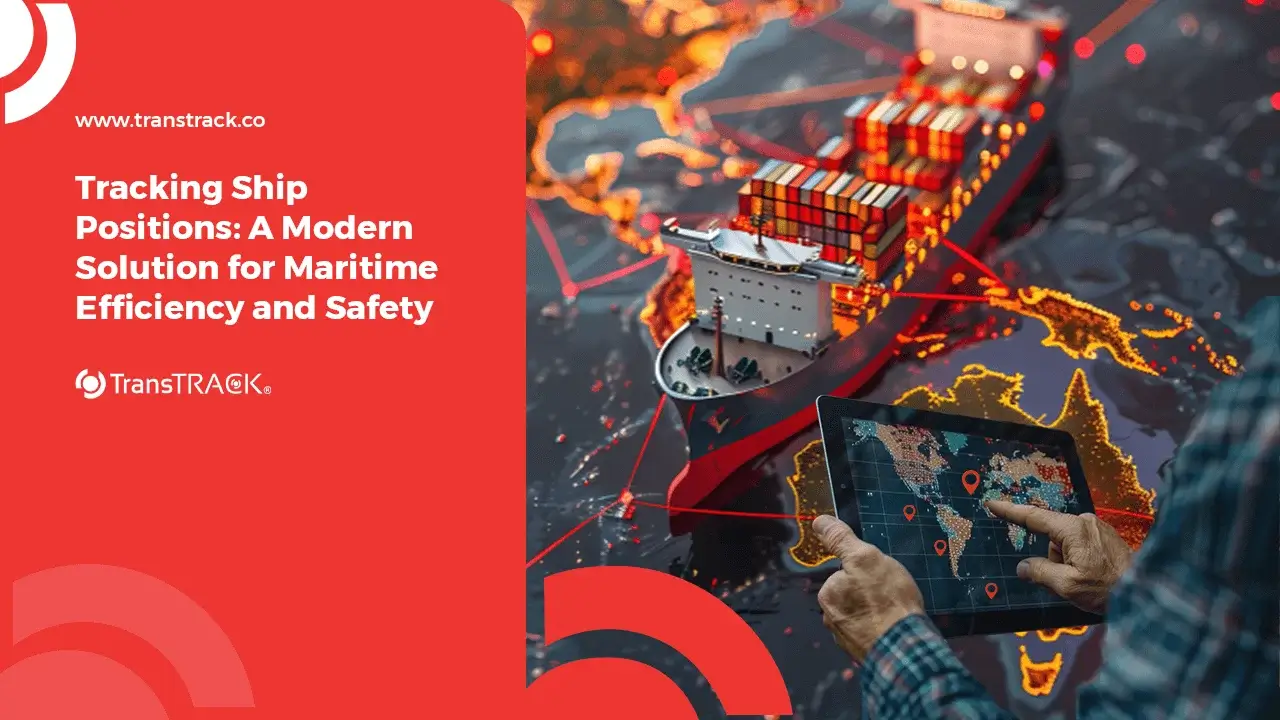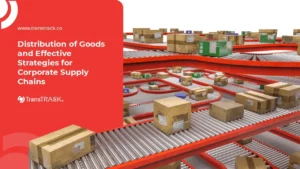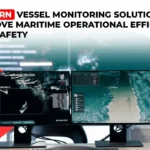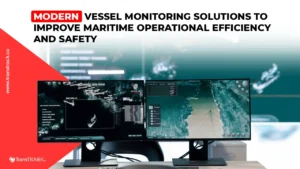Tracking Ship Positions: A Modern Solution for Maritime Efficiency and Safety
Posted on October 30, 2025 by Nur Wachda Mihmidati

In the ever-evolving maritime shipping and logistics industry, the need for efficiency, transparency, and operational security is increasingly pressing. The movement of vessels across international waters requires accurate and continuous monitoring.
Through the use of advanced systems and technologies such as the Automatic Identification System (AIS) and satellites, tracking ship positions not only assists maritime authorities in controlling maritime traffic but also supports the logistics and global trade sectors. This TransTRACK article discusses the development, working mechanisms, and strategic benefits of ship tracking systems in supporting the security and effectiveness of modern maritime activities.
What is a Vessel Tracking System?
Ship tracking system, or Vessel Tracking System (VTS), is a technology used to monitor the position, movement, and activity of vessels in real time via communication networks and satellites. This system utilizes data from the Automatic Identification System (AIS), radar, GPS, and other sensors to provide a comprehensive picture of maritime traffic. With this system, shipping companies, maritime authorities, and logistics providers can improve the safety, efficiency, and transparency of their maritime operations.
Key Features of Modern Ship Tracking Systems
Modern vessel tracking systems are designed to improve the efficiency and safety of maritime operations. With a range of advanced features, these systems are the perfect solution to address the various challenges that can hinder maritime operations. Here are some of the system’s key features:
Real-time Vessel Tracking
This feature allows users to track the position of ships and monitor their location in real time on a digital map. Information such as the ship’s speed, heading, and status can be accessed at any time. Real-time monitoring helps companies avoid delays and optimize travel routes.
Geofencing and Automatic Notifications
The geofencing feature allows users to create virtual boundaries at sea. When a vessel enters or exits these areas, the system automatically sends a notification. This is crucial for ensuring vessels operate on route and avoid risky areas.
Monitoring Fuel and Ship Engine Condition
Modern tracking systems can integrate with ship sensors to monitor fuel consumption, engine temperature, and key system performance. This data helps operators perform preventative maintenance and save operational costs.
Route Analytics and ETA Prediction
The route analytics feature provides insights into the most efficient shipping routes, while the Estimated Time of Arrival (ETA) is accurately calculated based on weather, speed, and sea condition data. This simplifies logistics planning and coordination at the destination port.
Benefits of Vessel Tracking Systems for Maritime and Logistics Businesses
Using a marine vessel tracking system isn’t just about leveraging advanced technology or tracking a vessel’s position. By collecting, analyzing, and utilizing data in real time, companies can improve operational effectiveness, reduce risk, and make more informed decisions. Some of the key benefits include:
Fuel Cost Efficiency and Operational Time
With accurate data, companies can set the most fuel-efficient routes and reduce travel time, thereby significantly reducing operational costs.
Improving Fleet and Crew Safety
Tracking the position of ships helps detect potential threats such as piracy, bad weather, or route violations. Early notification allows for swift action to protect the ship and its crew.
Facilitate Audits and Reporting to Customers
Automatically recorded ship voyage data can be used for audit reports, proof of delivery, and cargo status tracking. This increases customer confidence in shipping companies.
Marine Supply Chain Transparency
By tracking the position of ships, companies gain full visibility into the position and status of ships, allowing all parties in the supply chain—from shippers to receivers—to monitor the shipping process transparently and efficiently.
Technologies Used in Ship Tracking
Modern ship tracking relies on a combination of several technologies, including:
- AIS (Automatic Identification System): Tracks the position of ships, sending detailed location data, speed, and ship identity automatically.
- Satellite and GPS: Enables global monitoring, including in areas without radio signal coverage.
- Onboard Radar and Sensors: Measures distance, engine condition, and cargo status.
- Cloud Computing and IoT: Facilitating big data analysis and connections between ship devices.
- AI and Machine Learning: Used for optimal route prediction, early warning, and ship performance analysis.
Business Impact: Efficiency, Security, and Client Satisfaction
Implementing a system to track the position of ships has a significant impact on maritime business operations. Efficiency increases due to savings in time and fuel. Safety is assured thanks to constant monitoring of ship conditions and the marine environment. Furthermore, client satisfaction increases due to more timely and transparent deliveries. Thus, this system is not only a monitoring tool but also a business strategy that enhances competitiveness in the global shipping industry.
Conclusion
Vessel position tracking systems are a crucial solution for the modern maritime industry, enhancing operational safety, efficiency, and transparency. By leveraging technologies such as AIS, satellites, and data analytics, shipping companies can optimize fleet performance while providing superior customer service.
It’s time for maritime companies to switch to modern technology-based vessel tracking systems to ensure smart, safe, and efficient operations in this digital age. Improve your fleet management and logistics optimization with TransTRACK’s Vessel Monitoring System—a modern solution designed to track vessels, monitor their condition, and improve efficiency and safety.

FAQ
How does a ship tracking system help logistics businesses?
This ship tracking system provides full visibility into vessel position and shipment status, enabling better coordination and faster decision-making in supply chain management.
What are the benefits of having a vessel tracking system for shipping companies?
The main advantages of having a marine vessel tracking system include fuel efficiency, increased security, operational cost savings, and greater customer confidence thanks to shipping transparency.
What technology is used in ship tracking?
The marine vessel tracking system utilizes AIS, GPS, radar, satellites, as well as IoT and cloud computing support to collect and analyze vessel data in real-time.
Can the ship tracking system be integrated with logistics software?
Yes. Most modern systems can be integrated with logistics or fleet management software, allowing shipping data to be directly used for reporting, route planning, and operational performance analysis.
Recent Post
Topic :
Recommended Articles

 Bahasa Indonesia
Bahasa Indonesia








